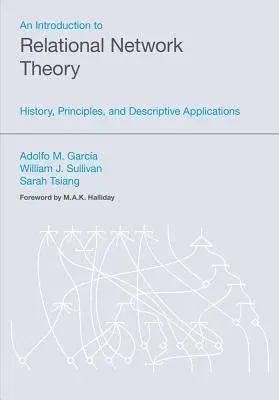Adolfo M Garcia
(Author)An Introduction to Relational Network TheoryPaperback, 27 April 2017

Qty
1
Turbo
Ships in 2 - 3 days
Only 1 left
Free Delivery
Cash on Delivery
15 Days
Free Returns
Secure Checkout

Part of Series
Equinox Textbooks and Surveys in Linguistics
Print Length
224 pages
Language
English
Publisher
Equinox Publishing (UK)
Date Published
27 Apr 2017
ISBN-10
1781792615
ISBN-13
9781781792612
Description
Product Details
Book Format:
Paperback
Country of Origin:
US
Date Published:
27 April 2017
Dimensions:
24.13 x
17.02 x
1.52 cm
ISBN-10:
1781792615
ISBN-13:
9781781792612
Language:
English
Location:
Sheffield
Pages:
224
Publisher:
Weight:
439.98 gm